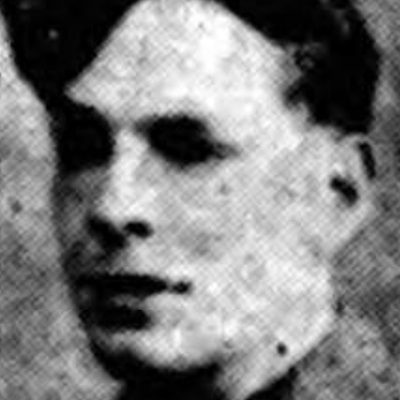Seagoe Cemetery is next to the Seagoe Parish Church on the outskirts of Portadown, Co. Armagh. The graveyard is the final resting place of fourteen men who died during World War Two.
The parish name of Seagoe in Co. Armagh is associated with Saint Gobhan. Today’s parish name could stem from either the Latin or Irish for Gobhan’s house. Dating back to around 540 AD, it is one of Ireland’s most ancient Christian settlements. A mound among the ruins of the old church exists where the first house of Gobhan once stood.
In its earliest days, the church or house of prayer served a large community living in the Lough Neagh lowlands between what is now Portadown and Lurgan. The early churches suffered from the violence of the 1600s as colonists fought against the native Irish.
The current church, situated across the road from Seagoe Cemetery, began life in 1816. At the time, it was a plain building but over the years a chancel was added and many improvements made.
The east window in St Mark’s Cathedral, Armagh is a copy of the one in Seagoe. The mosaic tiling in the church’s chancel comes from a Scandinavian design found on a coin buried in the crypt.
Commonwealth War Graves in Seagoe Cemetery
The Commonwealth War Graves Commission lists 14 grave plots in Seagoe Cemetery on Seagoe Road, Portadown, Co. Armagh.
| Last Name | First Name(s) | Date of Death | Grave |
|---|---|---|---|
| Bleeks | William James | 20th June 1942 | B 78 |
| Burke | Aubrey | 16th August 1946 | Old Ground 1167 |
| Cole | Norman | 20th April 1945 | E 13 |
| Craig | William John | 21st May 1941 | E 158 |
| Currie | Ernest Stewart | 18th June 1945 | C 37 |
| Doak | Robert Victor | 24th September 1942 | B 318 |
| Kerr | Samuel John | 26th November 1940 | Old Ground 1384 |
| Lutton | William John Kirkpatrick | 12th August 1946 | Old Ground 736 |
| Pentland | George | 20th September 1942 | Old Ground 765 |
| Kane | Vincent | 18th March 1946 | M 337 |
| Hunniford | George | 15th December 1941 | A 5 5 |
| Maginn | Henry Howard | 11th September 1942 | A 5 10 |
| Roney | Hugh | 26th July 1942 | B 6 6 |
| Wilson | Samuel James | 19th July 1942 | A 4 26 |
